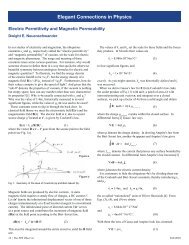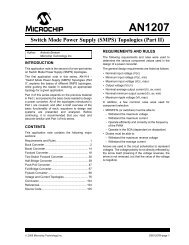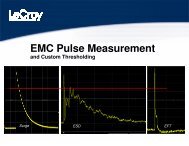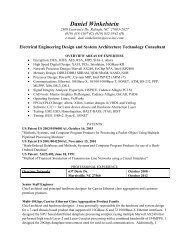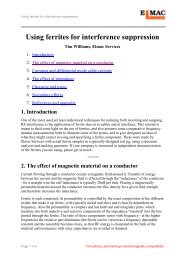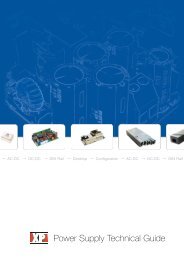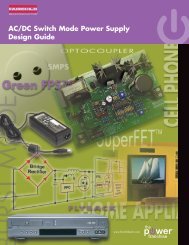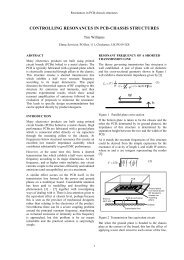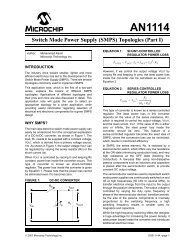Spice-Simulation Using LTspice Part 2 - IEC & Associates
Spice-Simulation Using LTspice Part 2 - IEC & Associates
Spice-Simulation Using LTspice Part 2 - IEC & Associates
- No tags were found...
Create successful ePaper yourself
Turn your PDF publications into a flip-book with our unique Google optimized e-Paper software.
To calculate the properties of the line you cut it in pieces -- but you must take very short pieces to simulate the“distributed capacitors andinductors”.Additionally you have to takeinto account the losses of theinductors (...caused by the skineffect which increases withfrequency..) as series resistors.The losses of the insulationmedium are representated byparallel resistors.As soon as a signal is applied to the input of the line, the following effects can the observed:So you can extend the simpleschematic model for a longerline by repeating the circuit.a) At the first instance of time the generator sees the cable simply as a resistive load with a value of the„characteristic cable impedance”, i.e. 50. The applied voltage at the cable input enters the cable and starts totravel along it (= “incident wave”). This characteristic cable impedance can be calculated as follows:Z =InductanceCapacitanceThe inductance and capacitance values always refer to a defined cable length (mostly: 1m). For the well knownRG58-type you have values of100pF / 1m,250nH / 1mb) When the input signal is travelling along the cable length, the small capacitors are charged or dischargedthrough small series inductors. This takes a finite time and so this gives rise to „cable velocity“ or “wavevelocity which is slower than the „ velocity of light in air“.We get:vvcable=lightrFor a coaxial cable ε r (....in America sometimes: „k“) is the dielectric constant for the cables insulation betweeninner and outer conductor.RG58 with Z = 50 Ohmuses polyethylene for thispurpose. If you look at thetable you can see that thewave velocity is reduced to66.6% of the velocity oflight, “C”.c) But what happens to the travelling energy on the cable? (see following chapter).82



